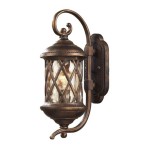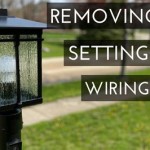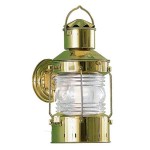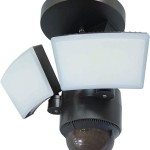24-Hour Outdoor Timer with Photocell Light Sensor: Enhancing Outdoor Lighting Automation
Outdoor lighting plays a critical role in enhancing property aesthetics, improving security, and providing convenience. Automating outdoor lighting systems provides further benefits, reducing energy consumption and simplifying daily routines. A 24-hour outdoor timer with a photocell light sensor is a valuable tool for achieving this automation, offering precise control over lighting schedules based on both time and ambient light conditions. This article delves into the features, functionalities, benefits, and considerations surrounding the utilization of these devices.
The core function of a 24-hour outdoor timer is to control the on and off times of connected electrical devices, typically outdoor lights, within a 24-hour cycle. Traditional electromechanical timers utilize a dial with pins or segments that can be set to represent specific on and off times. Modern digital timers offer more precise control, allowing for the programming of multiple on/off cycles per day and the incorporation of features such as sunrise/sunset adjustments based on geographic location.
Integrating a photocell light sensor adds another layer of sophistication to the control mechanism. A photocell, also known as a photoelectric cell or light sensor, detects ambient light levels. When the light level falls below a pre-determined threshold, the photocell triggers the timer to activate the connected lights. Conversely, when the light level rises above the set threshold, the lights are deactivated. This functionality ensures that lights only operate when needed, conserving energy and extending the lifespan of the bulbs.
Key Benefits of Using a 24-Hour Outdoor Timer with Photocell
The combination of timer functionality with a photocell sensor offers numerous advantages over manual operation or simple timer-based systems. These benefits encompass energy efficiency, enhanced security, and increased convenience.
Energy Efficiency: The primary benefit of using a 24-hour outdoor timer with a photocell is the potential for significant energy savings. By only activating lights when it is both dark enough and within the scheduled time frame, the timer eliminates unnecessary operation during daylight hours or when light is not required. This reduces electricity consumption, lowering utility bills and minimizing environmental impact. For example, during summer months, the photocell will delay the activation of lights until later in the evening, compared to a fixed-time timer that might activate the lights prematurely. This is especially useful for holiday lighting, where you want to automatically turn your lights on at dusk and off at a certain time of night.
Consider a scenario where outdoor lights are inadvertently left on during the day. A photocell sensor would immediately detect the sunlight and automatically turn the lights off, preventing wasted energy. Similarly, a timer programmed to turn lights on at a fixed time of day may activate the lights earlier than necessary during seasonal changes in daylight hours. The photocell dynamically adjusts to these changes, ensuring optimal energy efficiency.
Enhanced Security: A well-lit property deters potential intruders and enhances overall security. A 24-hour outdoor timer with a photocell can create the illusion of occupancy, even when the property is vacant. By automatically turning lights on at dusk and off at a pre-set time, or potentially keeping them on all night depending on your preference, the timer contributes to a safer environment. Randomizing the on/off times slightly can further enhance this deterrent effect, making it appear as if someone is actively controlling the lights.
Furthermore, the photocell functionality ensures that lights are activated precisely when needed, particularly in unexpected situations such as cloudy days or sudden weather changes that darken the surroundings. This immediate response to light level changes provides consistent illumination, maintaining a secure environment regardless of external conditions. The combination of timed operation and light-sensitive activation provides robust security measures that are largely automated and require minimal user intervention.
Increased Convenience: Automating outdoor lighting eliminates the need for manual operation, providing a convenient and hassle-free experience. Homeowners no longer need to remember to turn lights on and off each day, freeing them from this tedious task. The timer and photocell work seamlessly together to manage the lighting schedule, adapting to changing daylight conditions and providing consistent illumination without requiring any manual adjustments. This is particularly beneficial for individuals with busy schedules or those who travel frequently.
The ability to program multiple on/off cycles per day allows for customized lighting schedules that cater to specific needs. For instance, lights can be programmed to turn on at dusk, turn off later in the evening, and then turn back on again in the early morning hours to provide additional security and visibility during peak activity times. This level of flexibility enhances convenience and allows homeowners to tailor their lighting system to their individual preferences and requirements. The peace of mind knowing that outdoor lighting is consistently and reliably managed without manual intervention is a significant benefit for many users.
Types of 24-Hour Outdoor Timers with Photocell
Various types of 24-hour outdoor timers with photocells are available on the market, each offering different features and capabilities. Understanding these distinctions is essential for selecting the right timer for a specific application.
Electromechanical Timers: These timers utilize a mechanical dial with pins or segments that are inserted or pushed out to represent the on and off times. They are generally less expensive and simpler to operate than digital timers. However, they offer less precise control and fewer programming options. The photocell is typically integrated as a separate component that is wired in series with the timer. Electromechanical timers are suitable for basic applications where precise timing and advanced features are not required.
Digital Timers: Digital timers offer greater precision and flexibility compared to electromechanical timers. They feature a digital display and buttons for programming the on and off times. They often allow for multiple on/off cycles per day, sunrise/sunset adjustments, and other advanced features. Digital timers are generally more expensive but provide a more sophisticated and user-friendly experience. The photocell is typically integrated into the timer unit, simplifying installation and wiring. Digital timers are ideal for applications where precise timing, multiple programming options, and user-friendly operation are desired.
Smart Timers: Smart timers represent the latest generation of outdoor timers, offering even greater control and connectivity. They can be controlled remotely via a smartphone app or web interface, allowing users to adjust the lighting schedule from anywhere in the world. Smart timers often integrate with other smart home devices and platforms, such as Amazon Alexa or Google Assistant, enabling voice control and automated routines. They also provide real-time monitoring of energy consumption and other performance metrics. Smart timers are the most expensive option but offer the highest level of convenience, control, and integration with other smart home systems.
Factors to Consider When Choosing a 24-Hour Outdoor Timer with Photocell
Selecting the appropriate 24-hour outdoor timer with a photocell requires careful consideration of several factors, including the load capacity, environmental rating, ease of installation, and programming options.
Load Capacity: The load capacity of the timer refers to the maximum amount of electrical current that it can safely handle. It is essential to choose a timer with a load capacity that is sufficient for the total wattage of the connected lights. Exceeding the load capacity can damage the timer and create a fire hazard. The load capacity is typically listed in amps or watts on the timer itself or in the product documentation. It is crucial to carefully calculate the total wattage of the connected lights and select a timer with a corresponding or higher load capacity.
Environmental Rating: Outdoor timers are exposed to the elements, so it is important to choose a timer with an appropriate environmental rating. The IP (Ingress Protection) rating indicates the level of protection against solid objects and liquids. A timer with an IP44 rating or higher is recommended for outdoor use, as it provides protection against splashing water and dust. Some timers are specifically designed to be weatherproof and can withstand harsh weather conditions, such as rain, snow, and extreme temperatures. Selecting a timer with an appropriate environmental rating ensures reliable performance and longevity in outdoor environments.
Ease of Installation and Programming: The ease of installation and programming is another important consideration. Some timers are easier to install and program than others. Electromechanical timers are generally simpler to install and program, while digital and smart timers may require more technical knowledge. It is important to choose a timer that is easy to understand and operate, particularly for individuals with limited technical experience. Look for timers with clear instructions, intuitive user interfaces, and helpful online resources. A poorly designed timer can be frustrating to install and program, leading to wasted time and effort.
By carefully considering these factors, individuals can select the ideal 24-hour outdoor timer with a photocell for their specific needs, ensuring optimal performance, energy efficiency, and convenience.

Bn Link Outdoor 24 Hour Timer With Photocell Light Sensor Water Resistant Photoelectric Countdown 2 4 6 Or 8 Hours Mode Weatherproof Two Grounded S For Home And Garden Black Com

Bn Link Outdoor 24 Hour Timer With Photocell Light Sensor Water Resistant Photoelectric Countdown 2 4 6 Or 8 Hours Mode Weatherproof Two Grounded S For Home And Garden Black Com

Woods 2001wd Outdoor 24 Hour Dusk Until Dawn W Photocell Light Sensor Com

Bn Link Outdoor 24 Hour Timer With Photocell Light Sensor Water Resistant Photoelectric Countdown 2 4 6 Or 8 Hours Mode Weatherproof Two Grounded S For Home And Garden Black Com

Southwire 3434966 24 Hour Digital Photocell Timer With Light Sensor Michaels

Woods 2001wd Outdoor 24 Hour Dusk Until Dawn W Photocell Light Sensor Com

Outdoor Timer With 24 Hour Photocell Light Sensor Black Hometown Evolution Inc

Best Outdoor Light Timers 24 Hour Timer With Photocell Sensor China Made In Com

Bn Link Outdoor 24 Hour Water Resistant Timer With Photocell Light Sensor

Intermatic 1000 Watt Outdoor Timer With Photocell Light Sensor For Lights And Decorations Hb51kd89 The Home Depot
Related Posts







